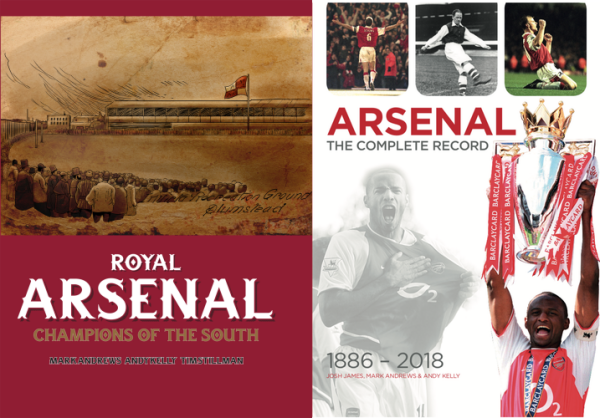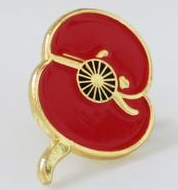Arsenal Players Remembered 1914-1918
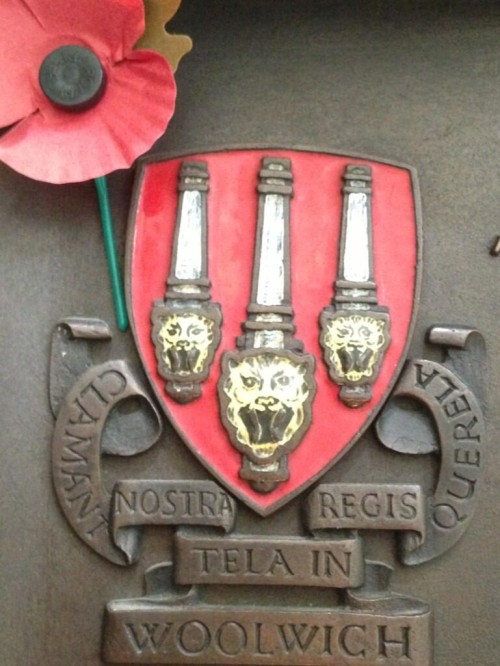
This is the final post on the theme of Arsenal and WW1. The past few days have seen the Gunners at War and the Gunners at home
Today we pay tribute on Armistice Day to the players who before the war represented Woolwich Arsenal FC but who weren’t necessarily with the club at the beginning of the War. These men paid the ultimate sacrifice being Killed In Action or dying as a result of the war. We have also included players who received career ending wounds.
On 17 January 1910 Arsenal reserves defeated Portsmouth reserves 2-1 in a South Eastern League game at the Manor Ground. Present in the Woolwich Arsenal team were three players – Charlie Buchan, Joseph Dines and Albert Beney – who all left the club shortly after this game.
Years later they each had similar experiences of being in the army, but contrasting outcomes from the WW1 battlefield highlighting the vagaries of War.
Charlie Buchan played the last game of his first brief spell with Arsenal in this match before an argument over expenses led to him eventually ending up at Sunderland, winning the League Championship and becoming a nationally celebrated sportsman. He joined up in 1915 as a private, was awarded the Military Medal for conspicuous bravery in 1917, and ended the war as an officer with his reputation enhanced even further. Buchan re-joined Arsenal in 1925 as Herbert Chapman’s captain, retired from playing in 1928 and had a long and successful career as a journalist. He lived until 1960 when he passed away after a night out in a Casino in France.
The Arsenal Roll of Honour presented to the best of our knowledge:
Second Lieutenant Joseph Dines
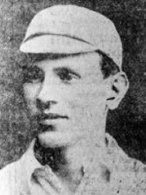
Joe Dines
On 17 January 1910 Joe Dines, at centre half, played his only game for the Gunners. Born in Kings Lynn he was an England Amateur International on many occasions, appeared for Liverpool in the League, and also played for a host of Southern League and non-league teams, and also won a Gold medal in the 1912 Olympic Games with the British team. He volunteered in November 1915, joining the Machine Gun Corps, and attained the rank of Second Lieutenant in the King’s (Liverpool) Regiment. Dines was Killed In Action tragically close to the end of the combat on 27 September 1918 at the age of 32. He is buried in the Grand Ravine British Cemetery in Havrincourt, France.
Corporal Albert Beney
On 17 January 1910 ‘Bert’ Beney scored both Arsenal goals as centre forward. Hastings born, he was signed in February 1909, eventually making 17 first team appearances and scoring 6 goals. He also hit 18 goals in 20 reserve games. In the summer of 1910 he left South London for Carlisle, and then onto Bury where he remained until the war began. Beney joined up becoming a Corporal in the Royal Engineers before being Killed In Action on 20 April 1915, dying from his wounds at the age of 32. He is buried in Poperinghe Old Military Cemetery.
Bombardier Spencer Thomas Bassett
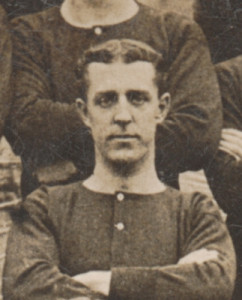
Spencer Bassett
Spencer Thomas Bassett from Plumstead played twice for the Woolwich Arsenal first team, and also appeared in more than 100 games for the Reserves between 1906 and 1910. When football was suspended in 1915 he was at Southend United and joined the Royal Garrison Artillery in December 1915. Bassett was promoted to Bombardier before being badly wounded and dying from his injuries at the Battle of Arras on 11 April 1917 at the age of 32. He is remembered with honour being buried at the Pozieres British Cemetery, France.
Lance Corporal Leigh Roose MM
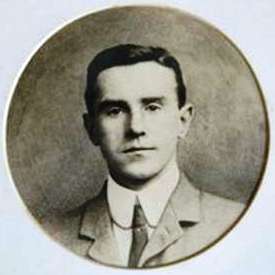
Leigh Roose
Leigh ‘Dick’ Roose was a famous pre-WW1 goalkeeper, a Welsh international and the Woolwich Arsenal keeper during the 1911-12 season. During the Battle of the Somme, just after winning the Military Medal for bravery, he was seen running towards the enemy at full speed in no man’s land while firing his gun in an attack on the enemy lines. His body was never recovered and he was reported as Killed in Action on 7 October 1916, at the age of 38. His name is found on the Thiepval Memorial on the Somme.
Private Charles Edward Randall
Centre forward Charles Edward Randall from Durham scored 12 times in 44 matches for the Woolwich Arsenal first team, and also appeared in 39 games for the Reserves between 1911 and 1914 before going to North Shields FC just prior to the war starting. He joined the Coldstream Guards before being sent to France in November 1915, and while fighting during the Battle of the Somme was Killed in Action on 27 September 1916 at the age of 32. He is remembered with honour being buried at the Dantzig Alley British Cemetery, France.
Lance Corporal James Maxwell
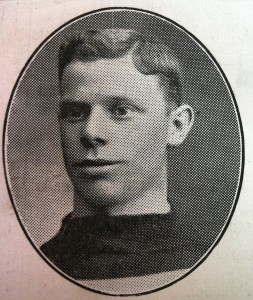
James Maxwell
Scotsman James Maxwell, who played twice as a first team forward for Woolwich Arsenal in the 1908-09 season, joined the army in 1915 and served with the 1st Battalion Seaforth Highlanders. He was Killed in Action in Mesopotamia on 21 April 1917 while taking part in the Samarrah Offensive at the age of 29. His body was not recovered and his name is recorded on the Basra War Memorial, near Nasiriyah in Iraq.
Private John “Pat” Flanagan
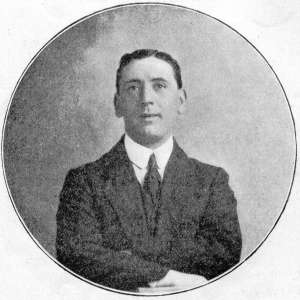
John Flanagan
Flanagan scored 28 goals in 121 games for Woolwich Arsenal between 1911-1915 and also appeared in five wartime games. Enlisting into the Army at Woolwich in December 1915, he remained in reserve employment as a shell machinist at the Royal Arsenal. Mobilisation came with the Army Service Corps in February 1917 and he was sent to German East Africa (Tanzania). In August 1917, Flanagan reported sick with dysentery and succumbed to the disease at the end of the month aged 30, and is now buried at the Dar Es Salaam War Cemetery.
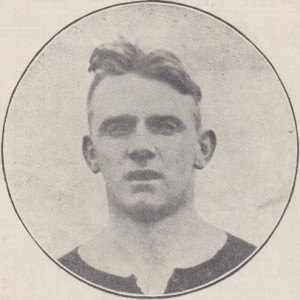
Bob Benson
On 19 February 1916, Arsenal defender Bob Benson, who had been working 16 hour shifts in the Royal Arsenal Ordnance Factory since the start of the war, went to watch the London Combination game against Reading. He persuaded a team mate to allow him to play instead, despite his last Arsenal appearance being in April 1915. After an hour of the match he walked off the pitch and, on arriving in the changing room collapsed, dying of a burst blood vessel. He was buried in his Arsenal shirt at the age of 33.
Hugh MacDonald died in 1920 of gas effects
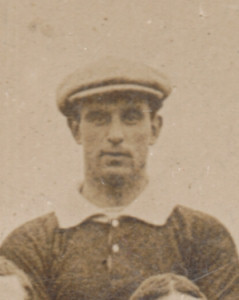
Hugh McDonald
Scotsman Hugh MacDonald, signed for the club three times – in 1906, 1908 and finally in 1912 – and was a hugely popular goalkeeper in the Plumstead era playing 103 times for the Arsenal. He joined up, fought with the British Army and survived the war. On returning to Plumstead he ran the Melbourne Arms in 81 Sandy Hill Road, but was to die soon afterwards at the age of 38, as on 27 August 1920 he succumbed to the results of the poison gas he had been exposed to in the trenches. (Note – however this is not borne out by his official war record, which shows he died of TB caught whilst on active duty after the war ended. Irrespective he was a casualty of the war – MA 27/06/20).
Career ending injuries from the War
Joseph McLauchlan
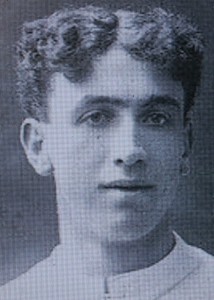
Joe McLauchlan
Joseph James Simpson McLauchlan, from Bathgate in Scotland, played 16 times for the Woolwich Arsenal first team and 33 reserve games between 1911 and 1913. While at Watford FC he was amongst the very first wave of 35 volunteers, along with Arsenal’s assistant trainer Tom Ratcliffe and future Gunner keeper Ernie Williamson, to enlist in the Footballers’ Battalion at an FA war rally in Fulham Town Hall organised by Henry Norris to officially start the Battalion on 15 December 1914. Later in the conflict, McLauchlan was wounded in the leg by shrapnel on active service in June 1916, and never played professionally again.
Corporal George Ford
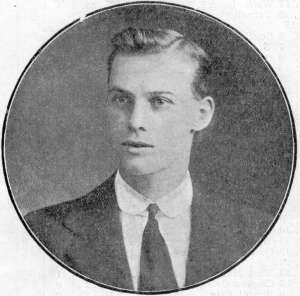
George Ford
George Ford from Woolwich, played 10 times for the Woolwich Arsenal first team and also a number of reserve games between 1912 and 1915. He joined the Footballers’ Battalion on 18 December 1914, three days after they were formed. During their Army training, players were given leave to return to play for their clubs, hence Ford was able to do both and his final game for Arsenal was in February 1915. But he never played football at that level again after receiving gunshot wounds to his left arm on 30 July 1916 during the Battle of the Somme.
About these items
The majority of these short items were written for the 2014 Centenary Commemoration of WW1 and most appeared in the Arsenal programme under the “Arsenal at War” title last season.
Sources
Many newspapers found in the British Library – newspaper section
Football and the First World War
—————–
Don’t forget to subscribe to the blog (top right). You know it makes sense.
Or have a look at our other site: The Arsenal Collection for more Arsenal memorabilia.
Copies of our books Royal Arsenal – Champions of the South and Arsenal: The Complete Record 1886-2018 are still available from the publishers.
